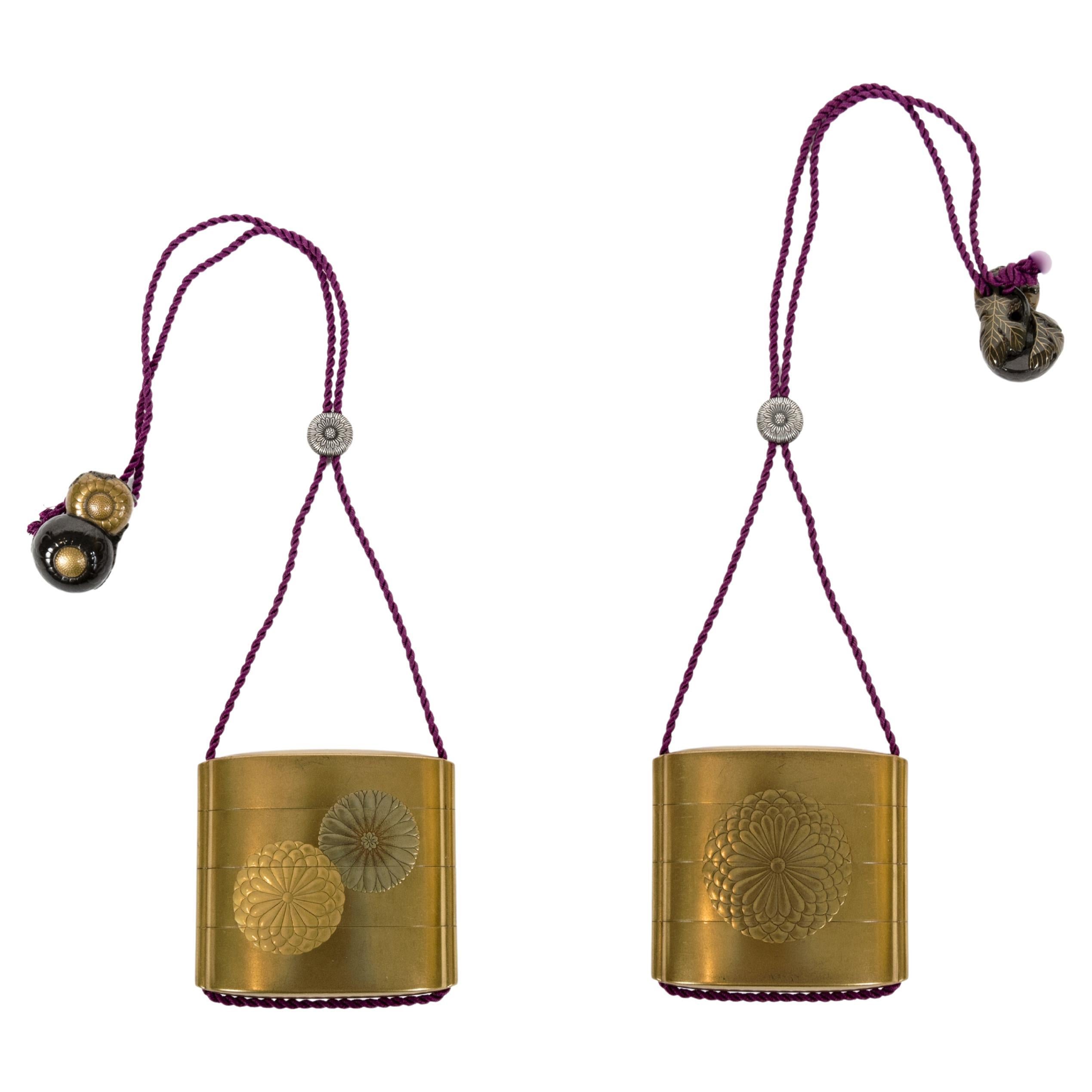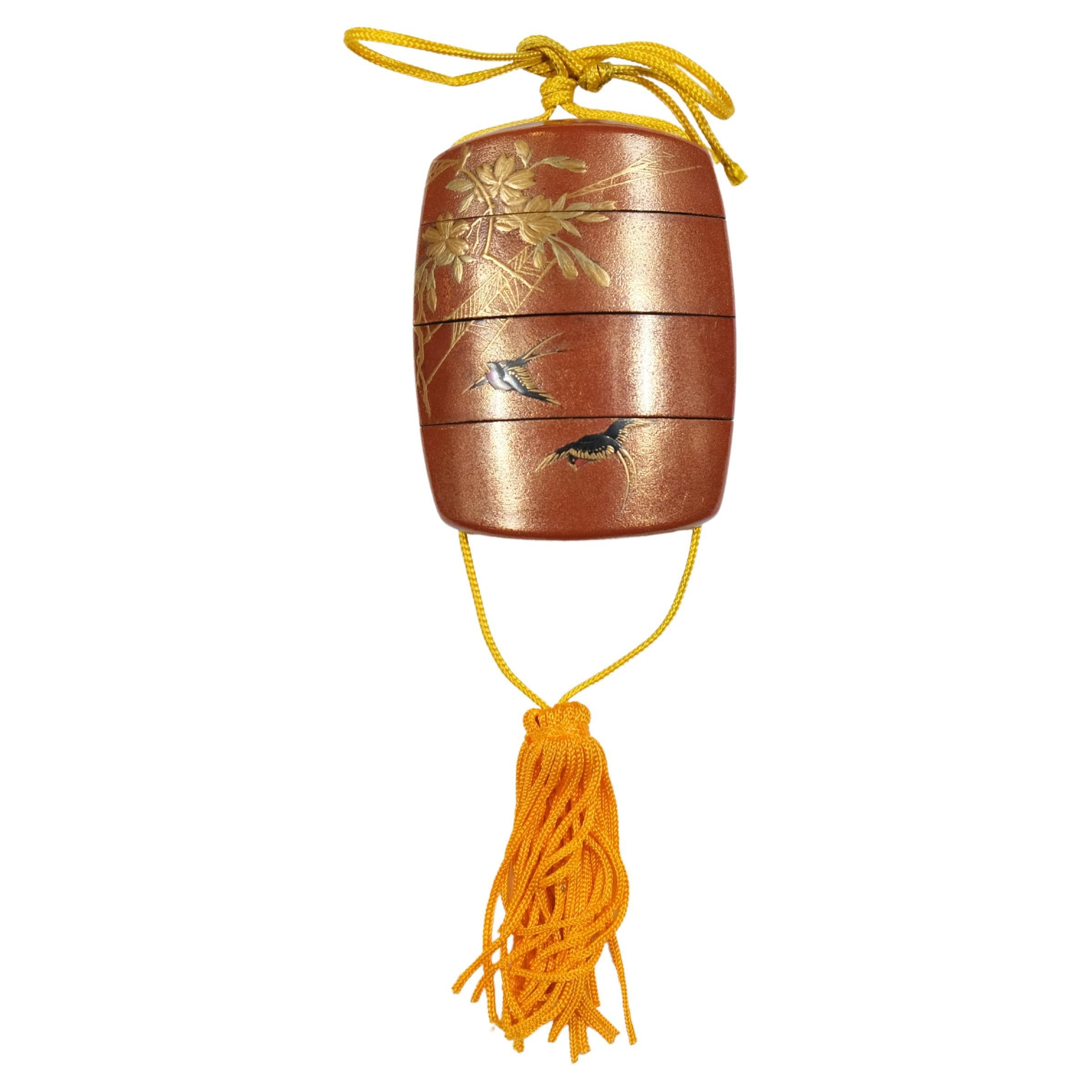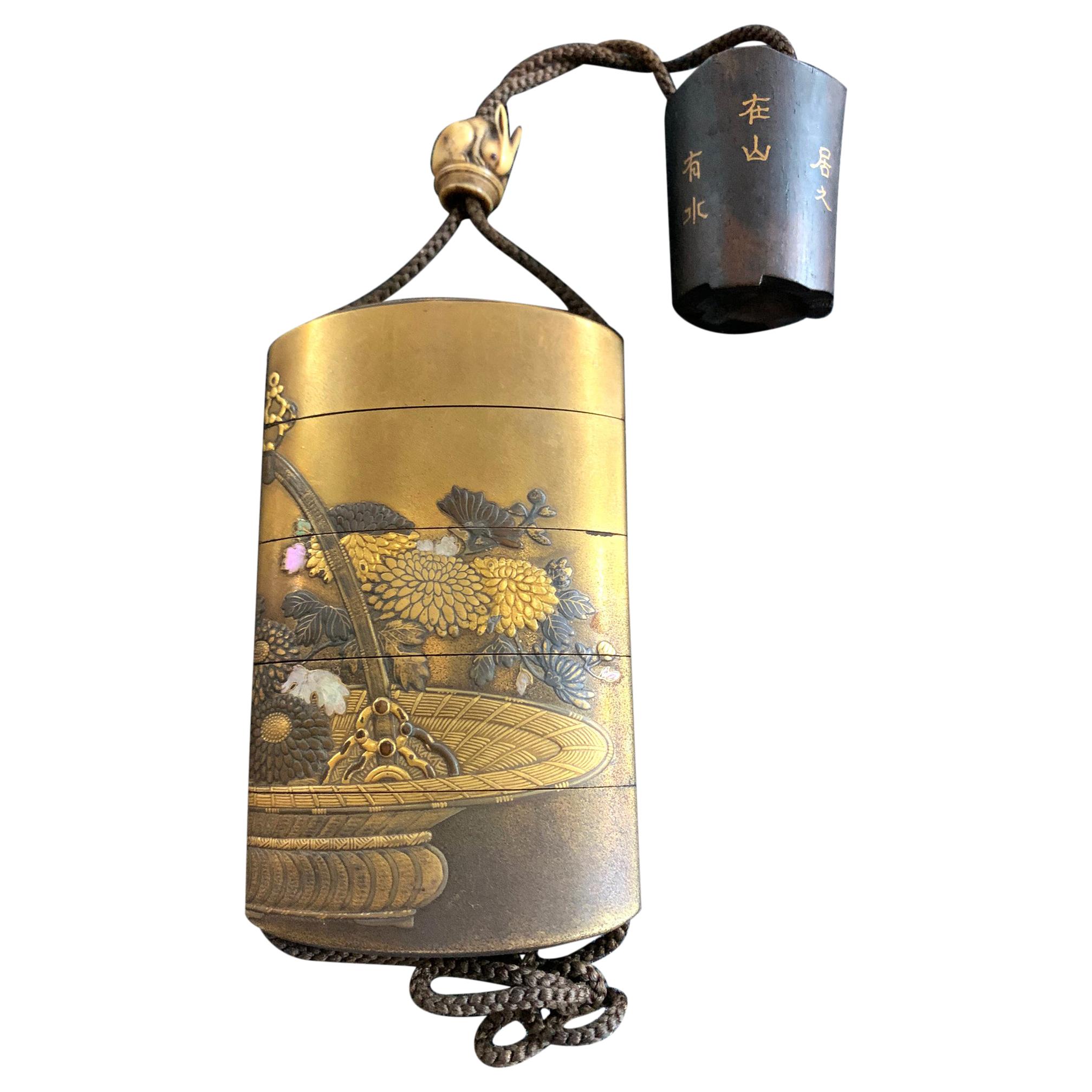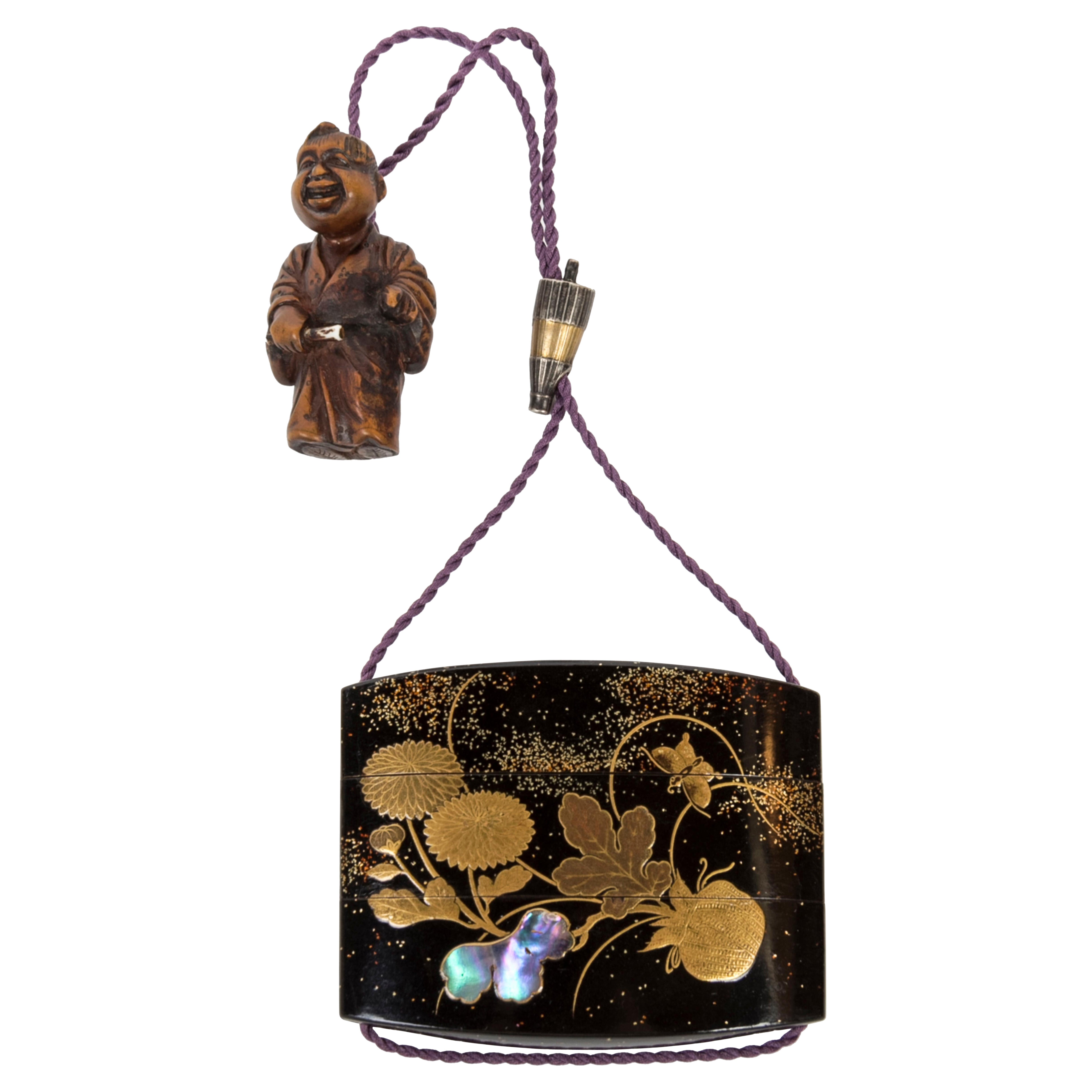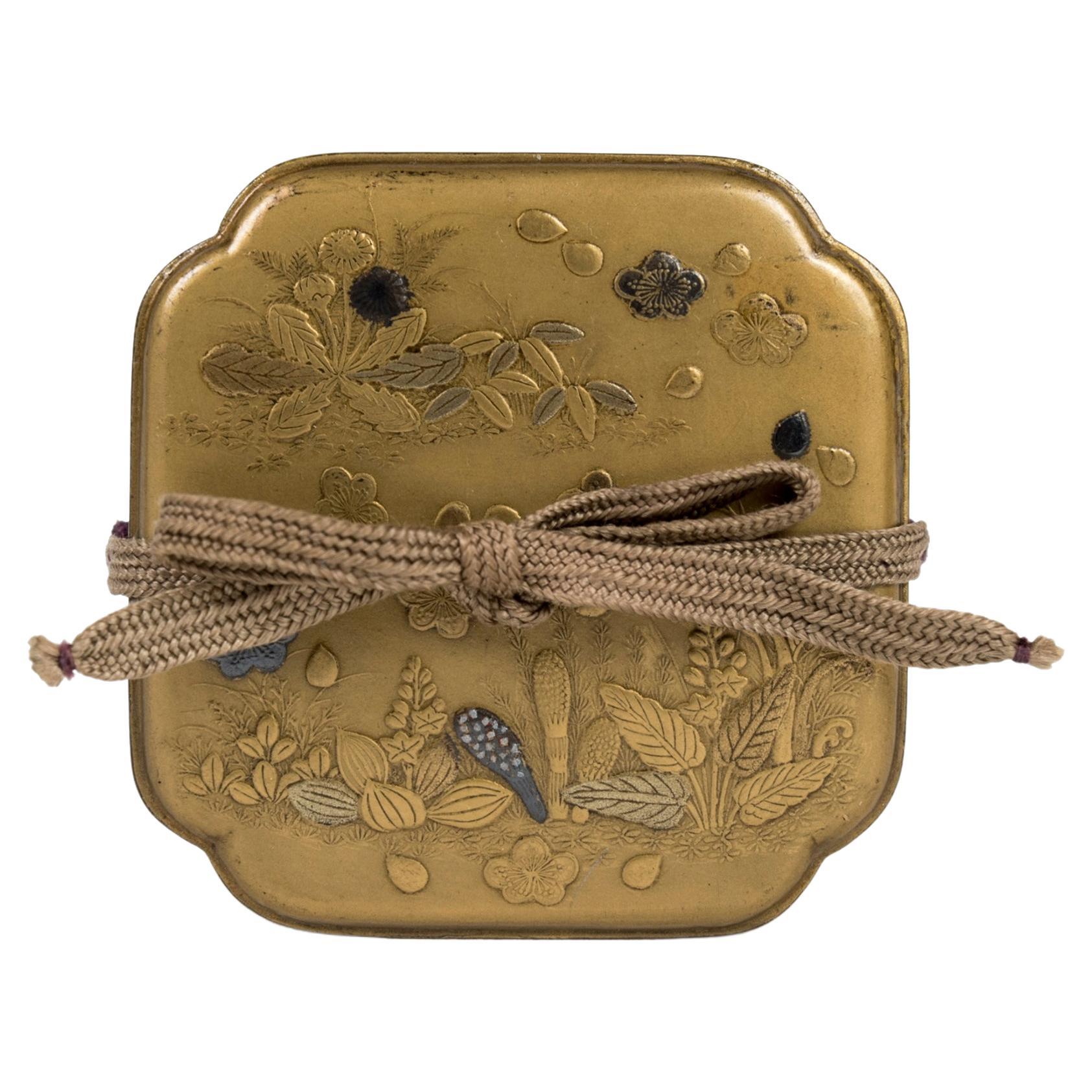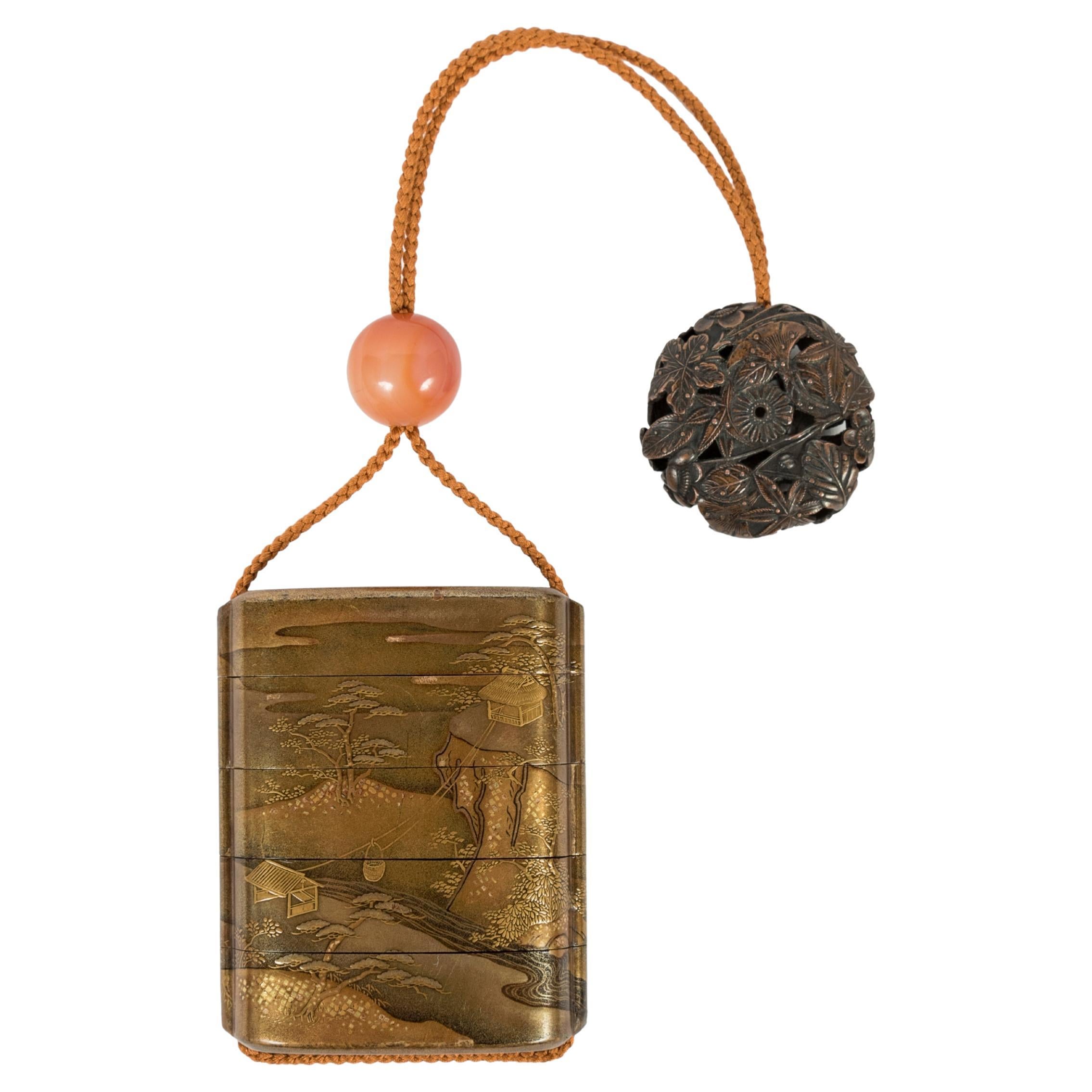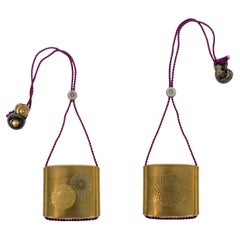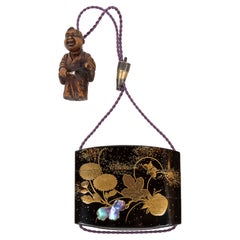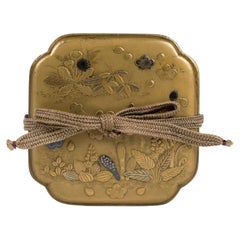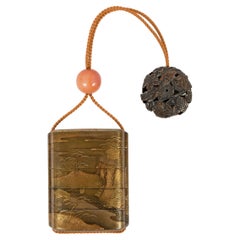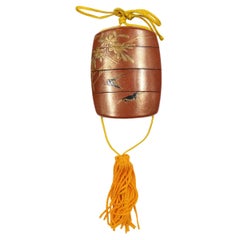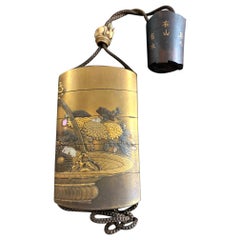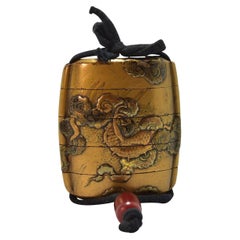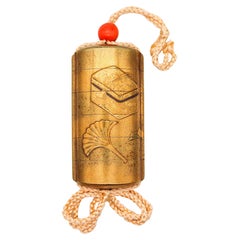Items Similar to Japanese lacquered Inro chrysantemum
Want more images or videos?
Request additional images or videos from the seller
1 of 11
Japanese lacquered Inro chrysantemum
$8,967.12
£6,638.37
€7,500
CA$12,408.25
A$13,679.81
CHF 7,156.84
MX$167,825.87
NOK 90,090.38
SEK 84,248.75
DKK 57,130.40
About the Item
Beautifull Inro of three compartments made in kinji lacquer with an hiro maki-e
ornament chrysanthemum flowers of gold and silver lacquer. Inside is in fundame
lacquer.
Signed by Josen Zo and stamped by Seisan
Presented with an Ojime in metal in the shape of a chrysanthemum flower and with
its netsuke representing two chrysanthemum flower buds.
Japon – ère Edo (1603-1868)
Inrô : height: 7 cm – width 8 cm – depth : 2.5 cm
Netsuke : Length : 4 cm – width : 2.5 cm – depth 1.5 cm
Ojime : Diameter : 1.5 cm
- Dimensions:Height: 2.76 in (7 cm)Width: 3.15 in (8 cm)Depth: 0.99 in (2.5 cm)
- Materials and Techniques:Lacquer,Lacquered
- Place of Origin:
- Period:
- Date of Manufacture:1603-1868
- Condition:Wear consistent with age and use.
- Seller Location:PARIS, FR
- Reference Number:Seller: 2024-13071stDibs: LU8311242525152
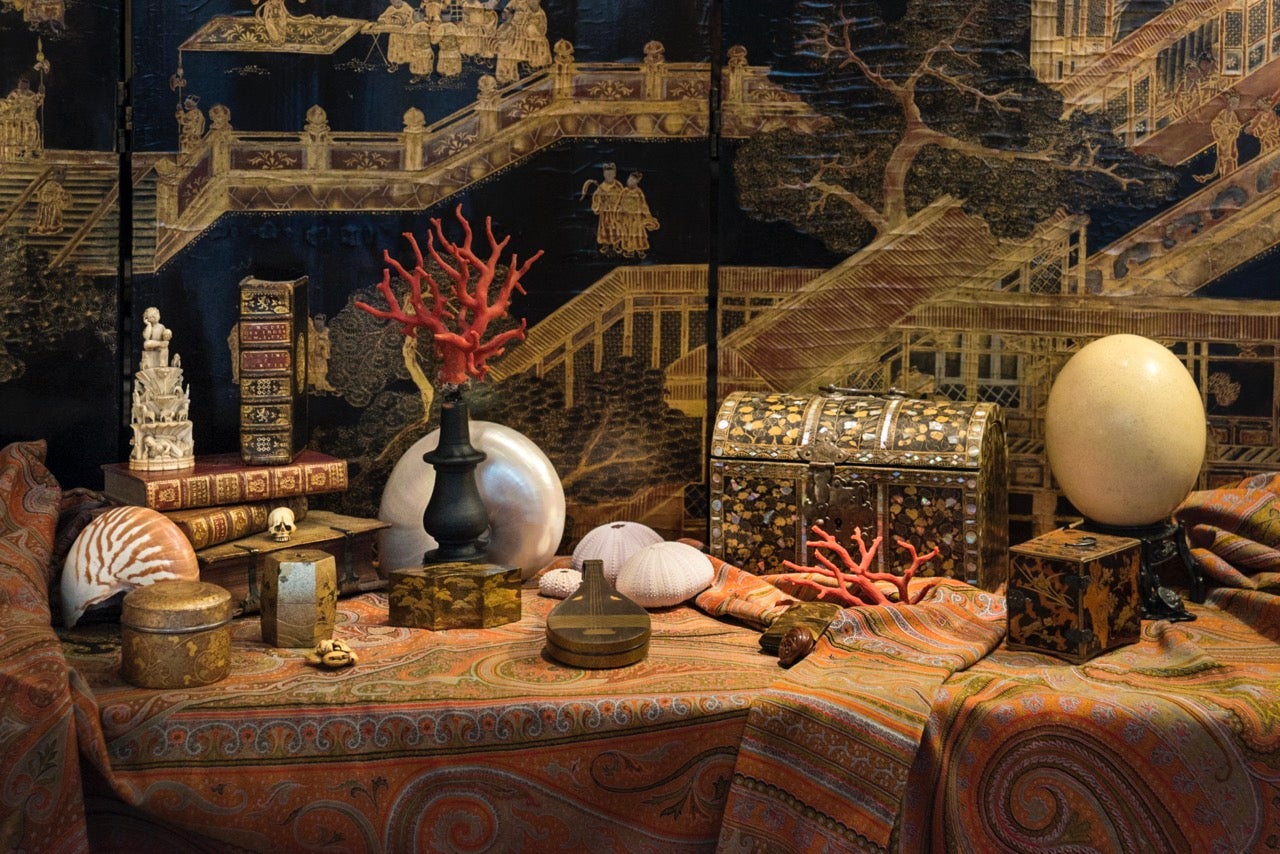
About the Seller
No Reviews Yet
Vetted Professional Seller
Every seller passes strict standards for authenticity and reliability
Established in 2013
1stDibs seller since 2023
- ShippingRetrieving quote...Shipping from: PARIS, France
- Return Policy
Authenticity Guarantee
In the unlikely event there’s an issue with an item’s authenticity, contact us within 1 year for a full refund. DetailsMoney-Back Guarantee
If your item is not as described, is damaged in transit, or does not arrive, contact us within 7 days for a full refund. Details24-Hour Cancellation
You have a 24-hour grace period in which to reconsider your purchase, with no questions asked.Vetted Professional Sellers
Our world-class sellers must adhere to strict standards for service and quality, maintaining the integrity of our listings.Price-Match Guarantee
If you find that a seller listed the same item for a lower price elsewhere, we’ll match it.Trusted Global Delivery
Our best-in-class carrier network provides specialized shipping options worldwide, including custom delivery.More From This Seller
View AllInro in gold kinji lacquer representing chrysantemum flowers on all sides
Located in PARIS, FR
Beautifull Inro of three compartments made in kinji lacquer with an hiro maki-e ornament chrysanthemum flowers of gold and silver lacquer. Inside is in fundame lacquer.
Signed by Josen Zo and stamped by Seisan
Presented with an Ojime in metal in the shape of a chrysanthemum flower and with its netsuke representing two chrysanthemum flower buds.
The chrysanthemum (kiku) in not only the heraldic symbol of the Japanese imperial family...
Category
Antique Early 19th Century Asian Edo Lacquer
Materials
Lacquer
Inro in black and gold lacquer with a proeminent chrysantemum flower motive
Located in PARIS, FR
Two compartments inrô in black lacquer, hira maki-e and mother-of-pearl inlay on a hirameiji background, decorated with a bouquet of chrysanthemums in a small purse, a hoe on the other side, and a fluttering butterfly which can be found on both sides. The interior is in hirameiji lacquer. The ojime is a drum made out of black lacquer and ivory with a mother-of-pearl inlay. The Manjû netsuke...
Category
Antique Mid-18th Century Japanese Edo Lacquer
Materials
Gold
Japanese golden kobako flowers Edo period 18th century
Located in PARIS, FR
Quadrangular kobako box decorated with flowers in gold and blue lacquer with aogai inlay. Lid and sides in fundame lacquer, underside and interio...
Category
Antique 18th Century Japanese Japonisme Lacquer
Materials
Gold
Japanese inro of the edo period adorned with a landscape houses near a lake
Located in PARIS, FR
Inrō with four gold lacquer compartments, decorated with a lake landscape. Accompanied by a bronze ryusa manju.
Small boxes formed of compartments that fit one on top of the other, i...
Category
Antique Late 18th Century Japanese Edo Lacquer
Materials
Gold
Japanese Sagemono Inro box with a maki-e decor of a Samuari in a lake landscape
Located in PARIS, FR
Inrô in gilded lacquer according to the takamaki-e, hiramaki-e and kirigane techniques, with five squares of a mountain lake landscape.
On the first side, there is a man on horsebac...
Category
Antique 18th Century Japanese Edo Lacquer
Materials
Gold
Gold Lacquer Inro Decorated with a Lake Landscape
Located in PARIS, FR
Inro with four gold lacquer boxes, decorated with a lake landscape. Accompanied by a bronze ryusa manju.
Small boxes formed of compartments that fit one on top of the other, inro (? ?) are traditional Japanese clothing...
Category
Antique Mid-19th Century Lacquer
Materials
Lacquer
You May Also Like
Lacquer inro, Japanese, Late 19th c.
Located in Stockholm, SE
A fourpart Japanese lacquer Inro. the lacquer is red with motives of a spider with its web in gold and two flying cranes. The lowest part of the inro has a crack on one side.
Category
Antique Late 19th Century Japanese Lacquer
Materials
Lacquer
Antique Japanese Inro by Shigehide Edo Period
Located in Atlanta, GA
This exquisite four-case lacquered inro was dated to the latter part of 18th century to early 19th century (Edo period) and made by Shigehide. The opposite sides of the inro together features a lavish flower arrangement in a bamboo basket (ikebana). The detailed craftmanship was a true pleasure to behold. Mostly Takamaki-e (high relief) were used to texturize the delicate petals of the chrysanthemums, on which different shades of gold were used to create contrast. Raden (mother of pearl) shells were also used to highlight some leaves, rendering the piece an interesting balance of color and material. The interior was completed in a mottled gold finish. It was signed Shigehide on the bottom with a Kao. There is a small carved rabbit ojime bead...
Category
Antique Late 18th Century Japanese Japonisme Lacquer
Materials
Wood, Lacquer
Japanese Inro with 4 Boxes in Gold Lacquer with Mat Kinji Background
Located in Marseille, FR
19th century Japanese inro with 4 boxes in gold lacquer with kinji mat background decorated in taka makiyé of gold of different tones. Lacquered wood siz...
Category
Antique 19th Century Japanese Japonisme More Asian Art, Objects and Furn...
Materials
Giltwood
Japan 1800 Edo Period Six Drawer Inro In Lacquered Gilt Wood With Utensils
Located in Miami, FL
Japanese Inro from the Edo Period (1603-1867).
Beautiful Inro, created in Japan during the Edo period (Shogunate), circa 1800. It was carefully crafted in carved precious wood with ...
Category
Antique Early 1800s Japanese Edo Lacquer
Materials
Coral
$2,275 Sale Price
30% Off
19th Century Japanese Inro with 5 Lacquered Wood Compartments
Located in Marseille, FR
19th Century Japanese inro with 5 lacquered wooden compartments, 93 x 50 x 30 mm in size. Weight 59.2 g.
Additional information:
Material: Lacquered ...
Category
Antique 19th Century Japanese Snuff Boxes and Tobacco Boxes
Materials
Wood
Japanese, Black Lacquer, Chrysanthemum Shaped Incense Burner 'Koro'
Located in Hudson, NY
With chrysanthemum motif and a gilded bronze lid. Includes unsigned collector's box. Interior measurements: 7 1/2" opening, 5 1/4" deep.
Category
Antique Late 18th Century Japanese Lacquer
Materials
Lacquer
More Ways To Browse
Japanese Metal Flower
18th Century Japanese Art
Antique Metal Shaper
Netsukes
Japanese Netsuke
Japanese Inro
Antique Inro
Antique Japanese Inro
Japanese Ojime
Japanese Black Lacquer Tray
Chinese Cinnabar
Antique Japanese Tray
Japanese Pearl Inlay
Japanese Document Boxes
Vintage Lacquer
Asian Black Lacquer Pearl Furniture
Chinese Cinnabar Furniture
Large Japanese Lacquer Box
